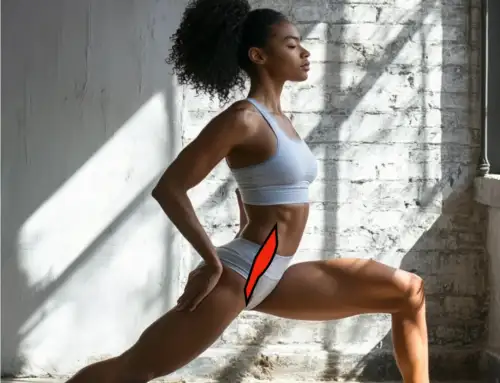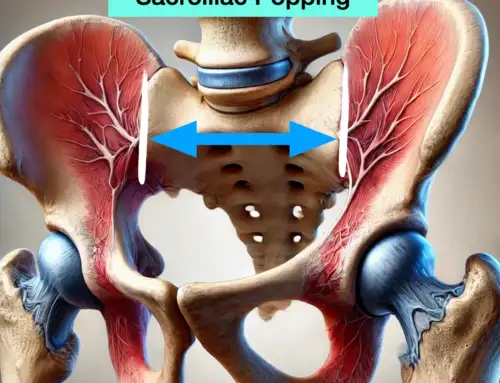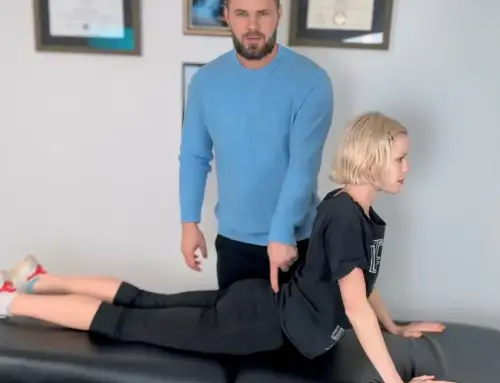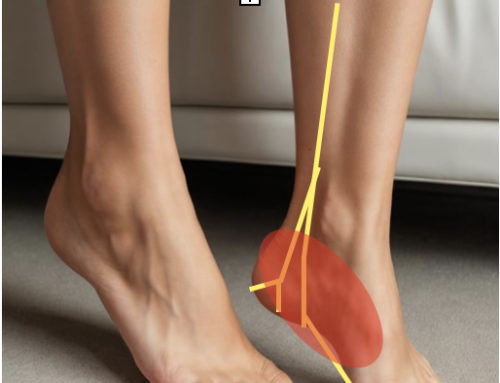Iliotibial Band: Exercises and Stretches for Hip and Knee Pain (Right Side)

Incorporating stretches into your routine can help alleviate tightness and prevent injury. This is especially true for the IT band, hip flexors, and glutes to improve flexibility and reduce discomfort.
The fibers of the Iliotibial band run from the lateral hip down the outer edge of the thigh to the outside of the knee. Friction and inflammation can cause the outer knee or hip to become painful, which is known as iliotibial band syndrome (ITBS) or iliotibial band friction syndrome (ITBFS)
Symptoms
When this important thigh band is too stiff, symptoms include pain over the lateral knee, which can be felt with associated popping or clicking (friction). The pain generally only hurts with activity and can spread up the outer thigh.
Function: Aids in the following joint movements
- Hip abduction
- Hip extension
- Lateral or away from the body hip rotation
Postural Function:
Critical support structure during single-leg standing. (runners)
Knee
- When the knee is straight, the band-aids knee flexion the lower leg (away from the buttocks)
- When the knee is bent, the band-aids extend the knee (away from the buttocks)
- Also has a band that connects to the patella to prevent inward dislocation
This band has extremely thick fibrous fibers that are stronger than the muscles that attach to it and can easily cause problems to the muscles that attach, including:
- Gluteus Maximus
- Gluteus Medius
- Tensor Fascia Latae
Stretching the Leg and Thigh to Release ITBS
The stretch targets the band closer to the hip and the tensor fascia latae. When performing these stretches, you may feel a deep stretch along the outside of your thigh and knee.

- Starting Position: Stand facing a wall with the right leg behind and crossed over the front left leg.
- Left leg: Make sure 100% of the weight is on the left leg closer to the wall.
- Trunk Position: Once standing steady, tuck the pelvis to straighten the lumbar spine to load the band.
- Create Full Body Tension: Straighten the right arm to create and elongate the entire myofascial chain for a deeper and more complete stretch.
- Hold: Maintain for 30 seconds, three times, with 30 seconds rest between repetitions.
- Repeat: Do a minimum of three times per week.
Knee Pain Relief: Treatment for Leg Pain During Running
This technique will be performed on the floor’s right to target the IT band at the knee side. This is also a more manageable position for those just beginning to learn. The right leg is aligned with the hip and spine, then elevated off the floor on a support.

- Start Position: The left leg is crossed over the right just above the knee, and the foot is in firm contact with the floor.
- Create Full Body Tension: Reach above the head and push the left arm away from the body to create tensile tension through the spine, resulting in a more full-body stretch targeting the fibrous band at the knee.
- Hold the Stretch: Maintains tension for 30 seconds, three times, with 30 seconds rest between repetitions.
- Repeat: Three times minimum per week.
Classic Suggestions:
Figure 4
- Start Position: Begin by lying on your back on a flat surface. Keep your feet flat on the ground with your knees bent.
- Lift Your Right Leg: Raise your right foot off the ground and cross your right ankle over your left knee, forming the shape of the number “4”. Your right knee should be pointing out to the side.
- Pull Towards Your Body: Grasp your left thigh with both hands and gently pull it towards your chest. You should feel a stretch in the right gluteal area.
- Hold the Stretch: Maintain this position and hold the stretch for about 15-30 seconds, ensuring you breathe deeply and steadily. You should feel a comfortable stretch, not pain.
- Switch Sides: Slowly release the stretch, place your right foot back on the ground, and repeat the process with your left foot crossing over your right knee to stretch the left gluteal area.
- Repeat: Perform the stretch 2-3 times on each side.
Proper Form and Technique
It’s essential to perform the stretching exercises precisely as directed when starting a stretching routine for a specific muscle or tissue. This will maximize the benefits and make the training more effective.
Some common mistakes during lower body exercises include:
Improper Joint Alignment or Angles- The goal of any lengthening maneuver, whether stretched or exercised, is to line up the fibers of the tissue with the direction of the load being placed on them.
Recommended Frequency and Duration
Duration
- 10-30 seconds for adults
- 30-60 seconds is ideal for flexibility training
Intensity
- Stretch should go to the point of tightness or mild discomfort with no pain.
Frequency
- At least three times per week minimum. Better results with 4-5 times per week
Consistency is vital to seeing results, so do these stretches regularly.
It’s essential to listen to your body and not push yourself too hard, as overstretching can lead to injury. Gradually increase the intensity and duration of stretches.
Additional Tips for Managing and Preventing IT Band Syndrome
IT band syndrome generally occurs due to muscle weakness, limited joint motion in the hip or knee, and repetitive activities, mainly running.
Key contributing factors include:
- Limited hip extension- Hip Stretches or flexibility training for the quad muscles can be helpful.
- Limited hip internal rotation- A runner or cyclist should incorporate exercises that improve this motion into their stretching routine.
- Knee valgus collapse is a poorly controlled Inward movement of the knee during running or squatting. Strengthening the gluteus medius is crucial to addressing this fault.
- Gluteus maximus medius weakness- Physical therapy exercises must focus on strengthening these muscles to reduce stress on the IT band.
Helpful Exercises
Hip Abductor Exercises
By far, the weakest muscle in this syndrome is the glutes medius. When this muscle is weak, the knee collapses inwardly (valgus), increasing the load on the outer knee. This is one of the most common causes of running injuries, known as runner’s knee.
Many running and cycling injuries involve this tough band, and it’s essential to see a specialist in sports medicine who understands the syndrome to address it before tendonitis develops.
To Perform:
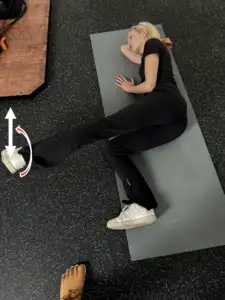
Starting Position: Lay on left side with the pelvis in line with the lumbar spine
Left leg: Bend to 90 degrees and resting on the ground
Right leg: The leg is straight with the toes pointing downwards towards the floor
Work: lift the leg towards the sky into abduction only as far as the spine and pelvis position can be maintained. Do 15 repetitions x 3 sets daily.
This exercise is specific to the superficial fibers of the gluteus medius; there are many other variations to target all muscle regions.
Other Important lower body exercises include:
- Gluteal strength-squat
- Core endurance- side plank.
- Strengthen calf muscles- Gastrocnemius and soleus strengthening exercises (calf raises)
- Hamstring- Mobility and strength of the hamstrings(nordic hamstring curls)
- Foam rolling- outer hips (gluteal region), adductor,
Pros and Cons of Different Techniques
Most of the stretches that intend to teach you how to stretch your IT band are non-specific, Meaning they fail to elongate and load the entirety of the tissue from hip to knee. Common examples include the standing cross-over stretch, seated figure-four stretch, and foam rolling.
This blog aimed to demonstrate an accurate method of properly addressing stiffness and increasing flexibility of the hips and knees by using full-body myofascial stretching techniques to adequately address hip and knee pain that’s common in runners.
This process or method can help you understand and impact your rehabilitation for other injuries to the shoulder, elbow, feet, and upper back.
Consulting with a healthcare professional or physical therapist can help determine the best stretching routine for individual needs.
Reach out to Dr. Dean (sports doctor) in California by texting (best), calling 323-354-6077, or emailing at drjustindean@gmail.com
Our editorial practices include evidence-based practices, interventions, and recommendations.
References


